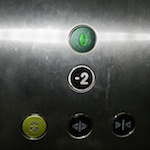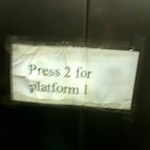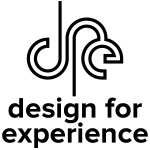As a judge for the international Design for Experience awards, I must forewarn you: I will have a very critical eye on anyone nominating an elevator in the “Promoting Empathy for Users” category.
Why? I’ve traveled within four continents and have yet to see an elevator truly designed for the user.
For example, why not provide an “undo” button? That’s a standard control on nearly every electronic interface on the globe except for elevator control panels. Having been in an elevator in the tallest hotel in the Western Hemisphere when an exuberant youth pressed every button, I know how frustrating that simple omission can be.
If an undo button costs too much extra money, why not at least allow me to press those buttons again and untoggle the selections? Because I had no way to reverse the button-pushing of that kid, I had to hop off that over-illuminated elevator and wait for the next lift.
And then there’s the labeling of floors. This picture was taken at a mall just outside London and shows just two floors: “0” and “-2.”
I’ll grant you: the usage of negative floors is much more intuitive than the North American “B2,” where the user is never sure if that’s the upper of two basement floors or the lower basement level.
In this case, however, both floors were ABOVE ground so … huh? Why not make it “upper” and “lower” or “0” and “1?”
Or how about another lift I found elsewhere in Europe with handmade instructions to overcome a complete lack of empathy for the user: “Press 2 for platform 1.”
If a hotel really wants to show empathy for me, their user, and anticipate my needs: I’ve got a keycard for room 836. Why not have an RFID tag in the card that can summon the elevator and preload the floor (with the option to “undo”). There could also be an RFID tag in my work badge with the ability to preload the elevator for the floor where it knows my next meeting is located based on communications between servers. Now that would show real empathy.
I will give the elevators of the world one concession: the close door button. I seem to remember a statistic that 85% of those buttons are disabled, but they’ve been provided for impatient passengers so we feel like we have some semblance of control over our lives. I appreciate that. Other than my Fantasy Football team, I have few avenues of empowerment, so I’ll take what I can get.
As Steve has poetically illustrated above, the DfE Promoting Empathy for Users award recognizes products, services, and companies that have clearly put the best interests of their users at the fore, making empathetic design decisions on their behalf. A prime example would be the elevator design that goes the extra mile to make life easier for it’s guest, promoting empathy from the top (floor) down.
If you know of products, services, or companies that promote an empathetic vantage point of the end user, nominate them. If you think that your product, service, or company deserves DfE recognition, apply for this award right now!
Image of chihuahua and duck courtesy Shutterstock










